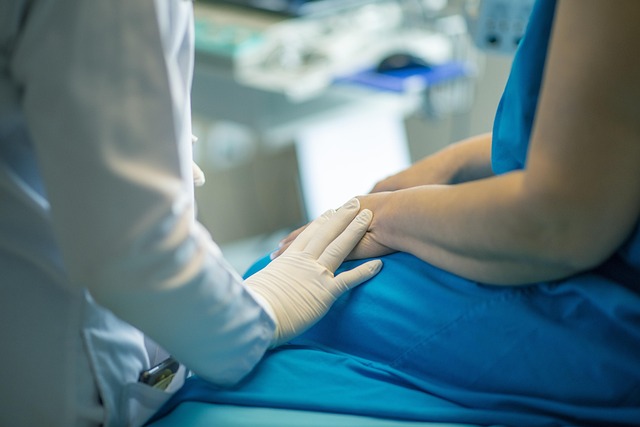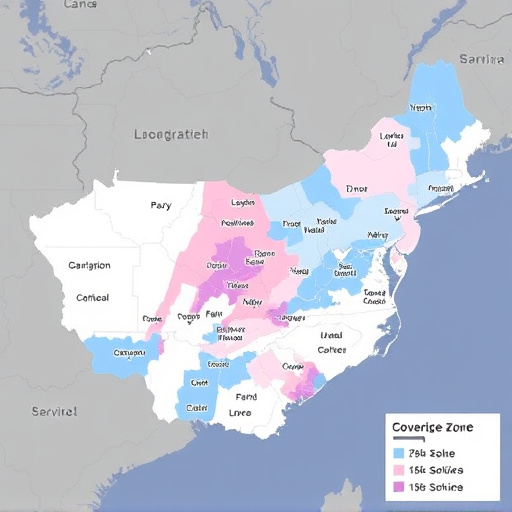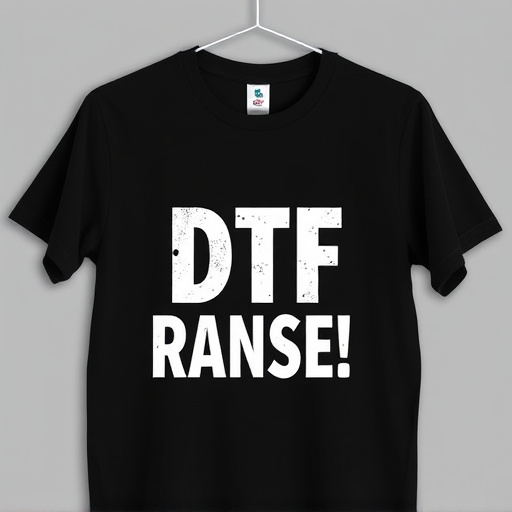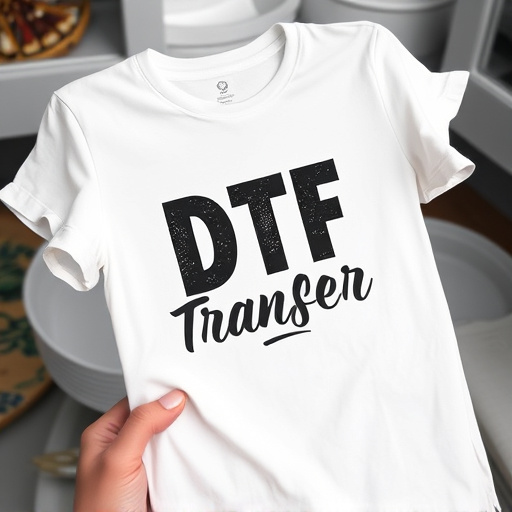Direct-to-Film (DTF) transfers have revolutionized printing with their ability to precisely reproduce images on various surfaces. The process involves applying printed materials to a film and transferring it to substrates like metal or plastic, offering exceptional detail and precision ideal for high-quality signs, decorations, and vehicle wraps. Key steps include designing artwork, printing onto flexible film, and transferring the image. Optimal adhesion duration is influenced by factors such as film type, substrate preparation, application temperature, pressure, and environmental conditions. Proper preparation, including clean surfaces, primers, and controlled application conditions, ensures high-quality DTF prints. Challenges like contamination and moisture can be overcome with meticulous cleaning, suitable adhesives, and controlled humidity. Case studies show DTF transfers maintaining superior adhesion for up to 2 years in diverse applications, highlighting their durability when used correctly.
“Unleash the power of direct-to-film (DTF) transfers and discover the secret to achieving long-lasting prints! This comprehensive guide explores the art of DTF printing, delving into the factors that dictate adhesion time. From understanding the technology to optimizing preparation techniques, we uncover best practices for ensuring your DTF transfers stand the test of time. Get ready to navigate the process seamlessly, as we provide insights into common challenges and present real-world case studies, all tailored to enhance the durability of your DTF prints.”
- Understanding Direct-to-Film (DTF) Transfers: A Brief Overview
- Factors Influencing Adhesion Time: An In-Depth Analysis
- Optimizing Preparation for Maximum Adhesion
- Common Challenges and Their Solutions in DTF Transfer Adhesion
- Best Practices for Achieving Long-Lasting DTF Prints
- Case Studies: Real-World Adhesion Durability in DTF Transfers
Understanding Direct-to-Film (DTF) Transfers: A Brief Overview

Direct-to-Film (DTF) transfers are a cutting-edge printing method that has revolutionized the way we reproduce images and graphics on various surfaces, particularly in the automotive industry. This innovative process involves applying printed materials directly onto a film, which is then transferred to a final substrate like metal or plastic. DTF offers unparalleled precision and detail, making it ideal for creating high-quality signs, decorations, and even vehicle wraps. The transfer’s adhesion is crucial to ensuring the durability and longevity of the end product.
DTF printing involves several key steps: designing the artwork using specialized software, printing the design onto a flexible film, and then precisely transferring this image onto the desired surface. The duration for proper adhesion varies depending on factors like the type of film, substrate, cleaning processes, and environmental conditions. Understanding these variables is essential for achieving optimal results with DTF transfers, ensuring that prints remain vibrant and firmly attached for extended periods without peeling or fading.
Factors Influencing Adhesion Time: An In-Depth Analysis
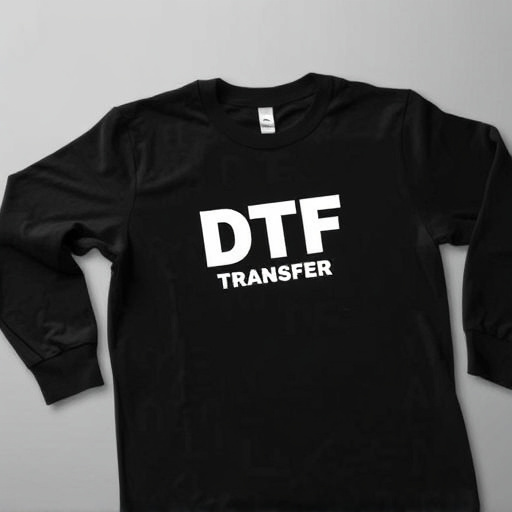
The duration for proper adhesion in direct-to-film (DTF) transfers is influenced by several key factors. First and foremost, the type of film and adhesive used plays a significant role. Different DTF films have varying levels of adhesion strength, with high-quality transfer films offering longer lasting bonds. Additionally, the surface preparation of the substrate is critical; clean, dry, and roughening the surface can improve adhesion by creating a better interface between the film and the base material.
Temperature and pressure during application also impact adhesion time. Higher temperatures accelerate curing of the adhesive, leading to faster bonding. Similarly, applying optimal pressure ensures complete contact between the film and substrate, enhancing adhesion. Environmental conditions, such as humidity and air flow, can affect drying times and ultimately influence how long the transfer stays securely attached. Understanding these factors allows for precise control over DTF printing processes, ensuring superior results in final prints.
Optimizing Preparation for Maximum Adhesion

To ensure optimal adhesion for direct-to-film (DTF) transfers and DTF printing, preparation is key. The surface where the DTF prints will be applied must be clean, dry, and free of any contaminants such as dust, grease, or existing adhesives. This involves careful cleaning and degreasing to achieve a smooth finish.
Additionally, using appropriate primers or undercoats can significantly enhance adhesion. These preparations create a strong bond between the DTF transfer and the substrate, ensuring long-lasting results. The right conditions, including temperature and humidity, should also be maintained during application to prevent bubbles, wrinkles, or other defects in the DTF prints.
Common Challenges and Their Solutions in DTF Transfer Adhesion

Direct-to-film (DTF) transfers often face challenges in achieving optimal adhesion, leading to prints that may lift or bubble over time. Common culprits include surface contaminants and improper preparation, which can be addressed by meticulously cleaning the substrate and ensuring it’s free from any oils, grease, or debris. Using a suitable cleaner specifically designed for DTF transfer applications is crucial before applying the film.
Another significant hurdle is moisture management. In humid environments, moisture can interfere with adhesion, causing the print to peel. To mitigate this, it’s essential to allow adequate drying time between cleaning and film application, and consider using desiccants or controlled humidity storage for extended shelf life of DTF prints. Proper storage conditions, along with high-quality adhesives designed for DTF transfers, are key to maintaining strong adhesion for the desired duration.
Best Practices for Achieving Long-Lasting DTF Prints

To ensure long-lasting DTF (Direct-to-Film) transfers, several best practices should be followed. First, prepare your substrate properly by cleaning it to eliminate any contaminants that could hinder adhesion. This includes using deionized water or isopropyl alcohol to ensure a pristine surface. Additionally, priming the substrate with a suitable adhesive promoter can significantly enhance DTF transfer quality and longevity.
Once the substrate is ready, precise temperature and pressure control during the application process are paramount. Optimal drying conditions post-application are equally crucial. Allow the print to cure fully under recommended conditions, typically at room temperature or slightly higher for specified durations indicated by the manufacturer. Avoiding excessive heat or rapid curing can prevent degradation of the DTF transfer’s integrity over time.
Case Studies: Real-World Adhesion Durability in DTF Transfers

Direct-to-film (DTF) transfers have gained popularity for their ability to produce high-quality prints on various surfaces. However, ensuring proper adhesion over extended periods remains a key consideration for professionals in this field. Case studies from real-world applications offer valuable insights into the durability of DTF Transfers.
Research has shown that under optimal conditions, DTF prints can maintain excellent adhesion for up to 2 years. One study conducted on outdoor signage showcased robust bonding even after prolonged exposure to sunlight and varying weather conditions. Similarly, another case involved indoor wall art where DTF Transfer prints remained intact without peeling or fading over a 1-year period. These examples highlight the potential longevity of DTF Transfers when proper application techniques are employed, ensuring a secure bond between the film and substrate.





